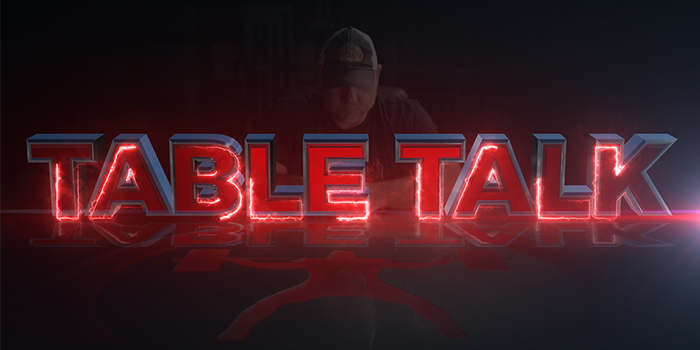
Running a business is a time-consuming challenge that completely takes over the lives of many entrepreneurs. For those who consider training a top priority in their lives, this intense professional pressure and large workload can threaten the ability to train optimally. In today's Table Talk video, Dave responds to a question about being a business owner and how it has affected his ability to train at times in his life:
"Was there ever a time that you had to put your own training aside to build your business? If so, how long did you go without training?"
With the exception of the last few years, Dave says that there has never been a time that he has had to go without training. Even at the busiest times of the year—when Dave was forced to make adjustments to when he trained—he was never forced to entirely skip training.
A big reason for this, Dave says, is how he has always organized his training. Since he left Westside and quit powerlifting in 2005, he has followed the same structure for his training: the heaviest, most demanding training days are always on Saturday and Sunday. This means that Friday and Monday are reserved as non-training days. By having Friday and Monday off, Dave always had the ability to move training to those days if something came up over the weekend and he couldn't train — he could move Saturday's session to Friday and Sunday's session to Monday.
With those training days prioritized, he could just drop in two other days during the week. These other training days would be Tuesday, Wednesday, or Thursdays (all three in one day, if necessary) and would be smaller body parts like arms or shoulders, which wouldn't require a lot of time or intense effort to train. This method of dividing his time was the easiest way to ensure he got all of the important things in. Around the holidays, when things were the busiest, Dave would set his training time for these weekday workouts at 10 AM. If that time didn't work out, he had a fallback time of 2 PM. If that fallback didn't work out, he'd have another fallback time of 6:30 PM.
By structuring his training like this, Dave has never had to take extended time away from training other than for medical reasons, like his hip replacements. In these cases, he has simply listened to his doctors about the recovery timeline — something he didn't do in his younger years, but says he should have.
For lifters who find themselves with a similarly busy schedule that may threaten training, Dave says you just have to find a way to make things go together cohesively, which may mean adjusting your schedule and leaving room for flexibility. A perfect balance between work and life does not exist, but you can always find a way to make things work. Regardless of what type work you're in, when things ramp up and your professional life is more stressful, Dave says that one of the worst things you can do is drop your training. You need the outlet of training to deal with stress and keep your mind in a good state. It's a terrible tradeoff to think you can accomplish more work by cutting out training. If you can keep the training in and reduce stress, you'll be much more productive during the time you do spend working.











SO true and I found that out the hard way. It turned out that the 120 lbs. doctor knew more than I did and I should've listened instead of pushing through it and rupturing my quad tendon.